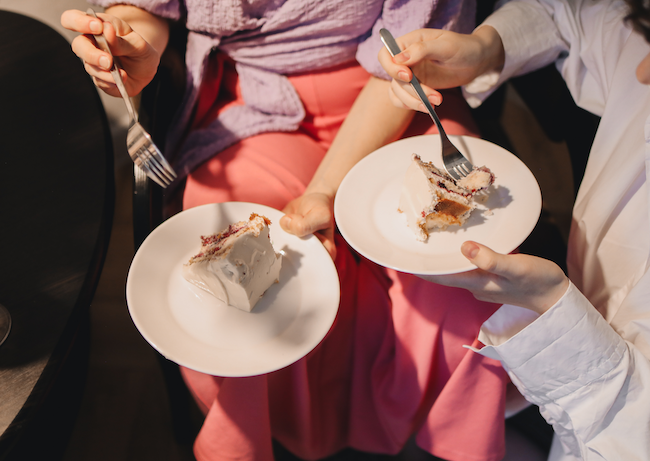The Food Mood Formula Connection: Decoding Cravings to Stop Binge Eating By Nina Savelle-Rocklin, Psy.D.
Binge eating is a complex issue that affects millions of people worldwide. Most feel shame about their compulsion and seek relief through diets and willpower. Yet the most effective strategy to create lasting change is to identify and process what’s eating us instead of focusing on food. It’s not about willpower, but about why-power.
According to the National Institute of Mental Health, binge eating disorder is the most common eating disorder. A recent Harvard study indicates this disorder is even more prevalent than previously recognized. Many sufferers feel mortified and embarrassed by their behavior, often unaware they have a diagnosable and treatable condition.
Dieting is the most common solution for emotional eating. Yet, that’s like plucking a weed without digging out the root and hoping it won’t grow back. Most people don’t know why they binge or constantly think about food 24/7. Yet those deeply rooted reasons, hidden from conscious awareness, lead to binge eating.
One powerful tool for decoding food cravings and addressing the underlying emotional needs that drive binge eating is the Food-Mood Formula that I developed during two decades of experience treating patients with problem eating.
1. Identify Your Cravings. The first step in applying the Food-Mood Formula is to recognize the type of food you're craving.
- Smooth and creamy foods (e.g., ice cream, pudding, yogurt)
- Filling foods (e.g., bread, pasta, pizza, cake)
- Crunchy foods (e.g., chips, crackers)
- Chocolate and Candy
2. Decode the Emotional Message. Each category of food corresponds to a specific emotion, which is the underlying reason for binge eating. By understanding what each craving represents, you uncover the hidden reasons why you’re turning to food. This awareness allows you to develop healthier coping strategies that address your emotional needs directly.
When we crave ice cream or something creamy, it isn’t ice cream we really want—it’s comfort. The key to change is finding new ways to self-soothe that don’t involve eating.
Filling food takes up space within us and is related to loneliness or emptiness. Instead of symbolically filling an internal void, look at the empty spaces in your life and find new ways of creating fulfillment.
Crunchy food, which makes us bite down hard, is associated with forms of anger such as frustration, annoyance, irritation, or rage. Instead, learn to express anger in a healthier way--with words.
What about chocolate and candy? Milk chocolate falls under the creamy category, indicating a need for comfort. Chocolate with nuts or dark chocolate is crunchy and therefore connected with forms of anger. Non-chocolate candies often represent a craving for more sweetness in life, such as connection, fulfillment, and love.
Keep in mind that enjoying some chips with your sandwich is not the same as eating a family-size bag of Dorito’s and hating yourself with every bite. The Food-Mood Formula only applies to situations when you feel a pull toward food to change the way you emotionally feel.
3. Be a Detective. Each time a craving arises, pause to consider its significance. Instead of viewing cravings as weaknesses, see them as valuable messages from your inner self. Then, take steps to address the underlying need. For example, if you crave ice cream for comfort, consider journaling or engaging in a soothing activity. If you’re lonely, call a friend or join a support group.
4. Express Yourself. Practice saying your emotional needs aloud. For instance, rather than reaching for food, say, "I'm feeling lonely, and I need connection," or “I’m frustrated with my work situation.” Speaking aloud may feel a bit silly yet it will help you shift your focus from what you are eating to what is eating at you.
By consistently applying this formula, you will develop a deeper understanding of your emotional needs and find healthier ways to meet them. The Food-Mood Formula, when approached as a daily practice, is a means of aligning with your core emotional needs and is a powerful tool for balance, growth, and a healthier relationship with food.
Dr. Nina Savelle-Rocklin is a renowned author and podcast host and one of the nation’s leading psychoanalysts known for the psychology of eating. Her signature message, “It’s not what you’re eating, it’s what’s eating ‘at’ you,” has resonated with hundreds of thousands of listeners from around the globe in 45 countries. As founder of The Binge Cure Method, she guides emotional eaters to create lasting food freedom so they can take back control of their lives and feel good in their bodies.


